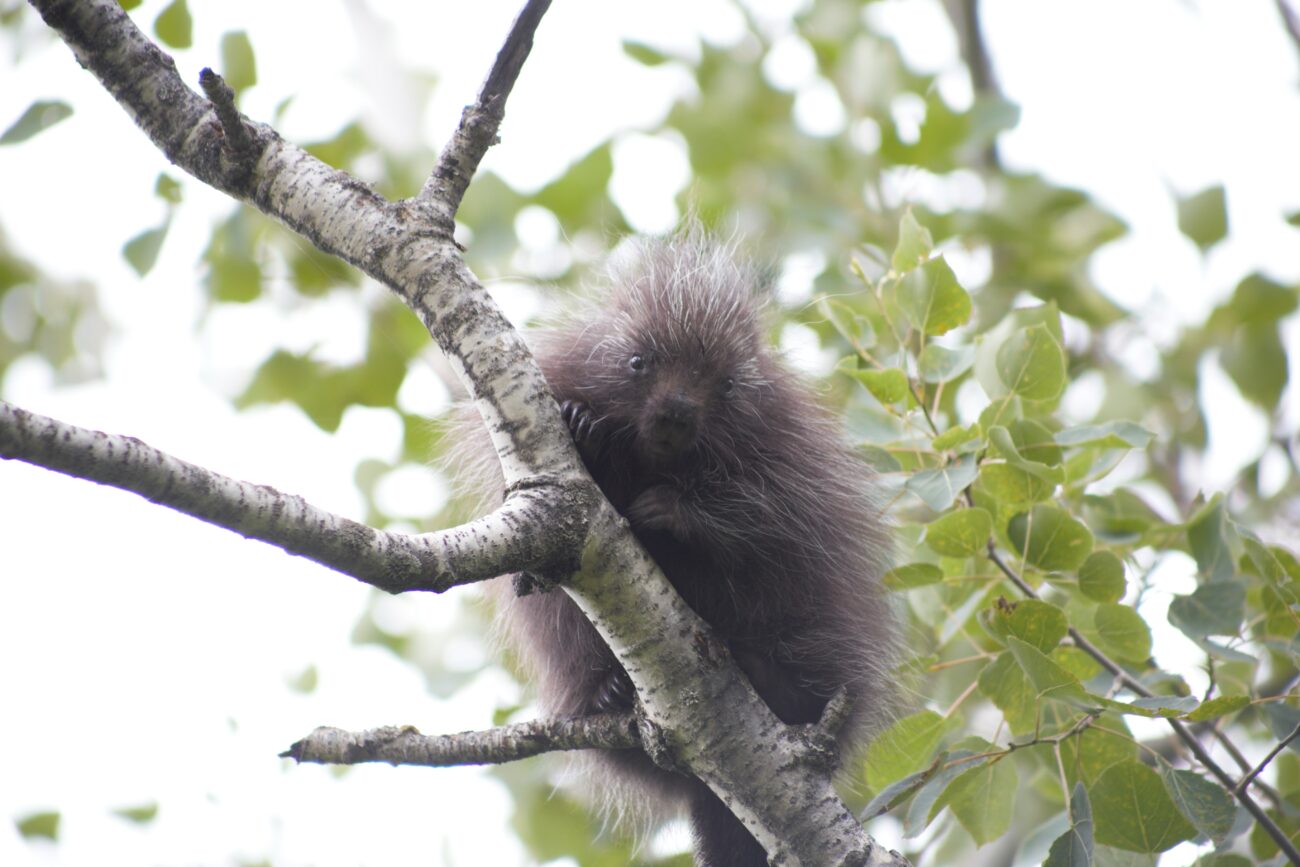
We hope you enjoyed reading about the kickoff of all our monitoring projects and outdoor activities in The Spring Edition of Notes from the Field! This summer is also packed with activities on our Nature Reserves.
September 8, 2023- A Review of Fascinating Forests Passport to Nature

Another Passport to Nature event took place at Adams Nature Reserve on Sunday August 20th, this time Fascinating Forests led by Naturalist Chase Moser. Participants hiked through the forest as Chase led a captivating tour, providing all kinds of information about the trees, geology, forest floor and mushrooms which are sprouting up everywhere!
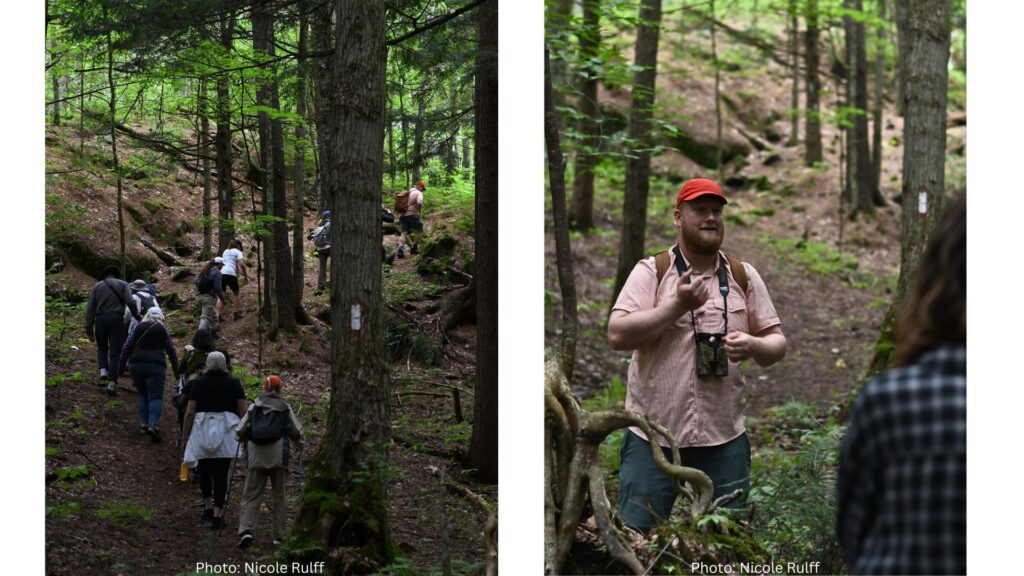
The weather was grey and cast the forest in moody lighting to start but brightened up with sunshine by the end.
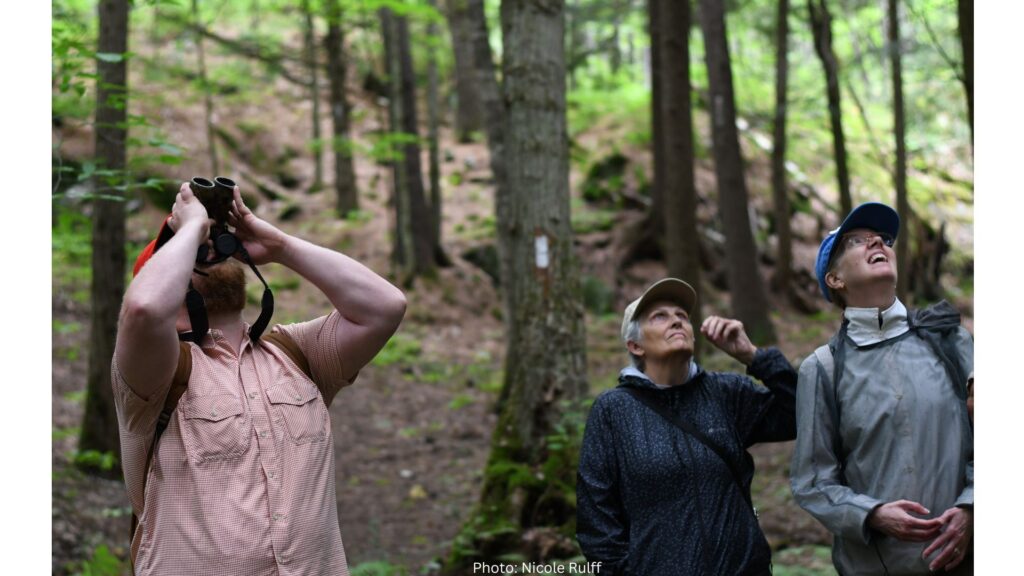
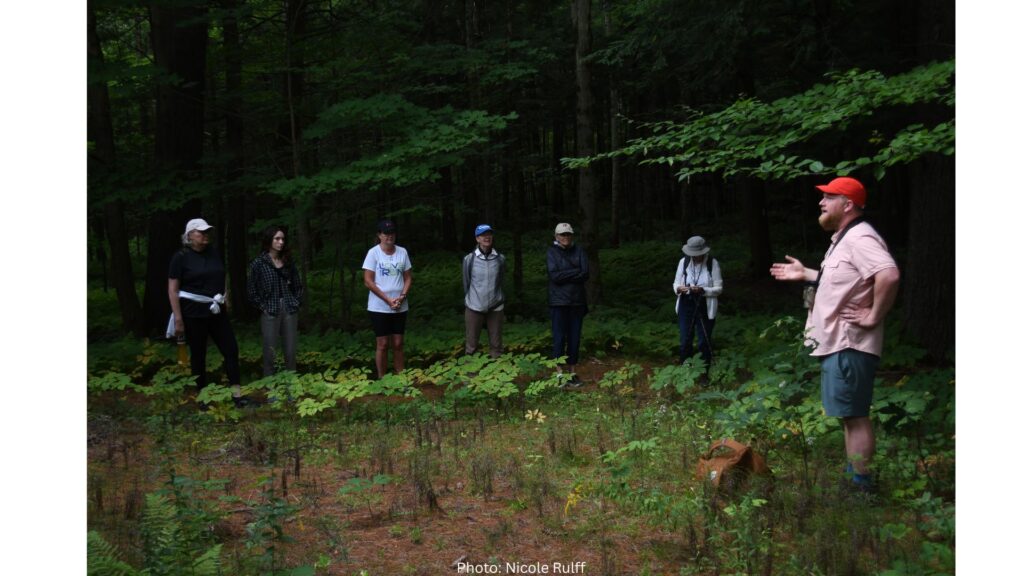
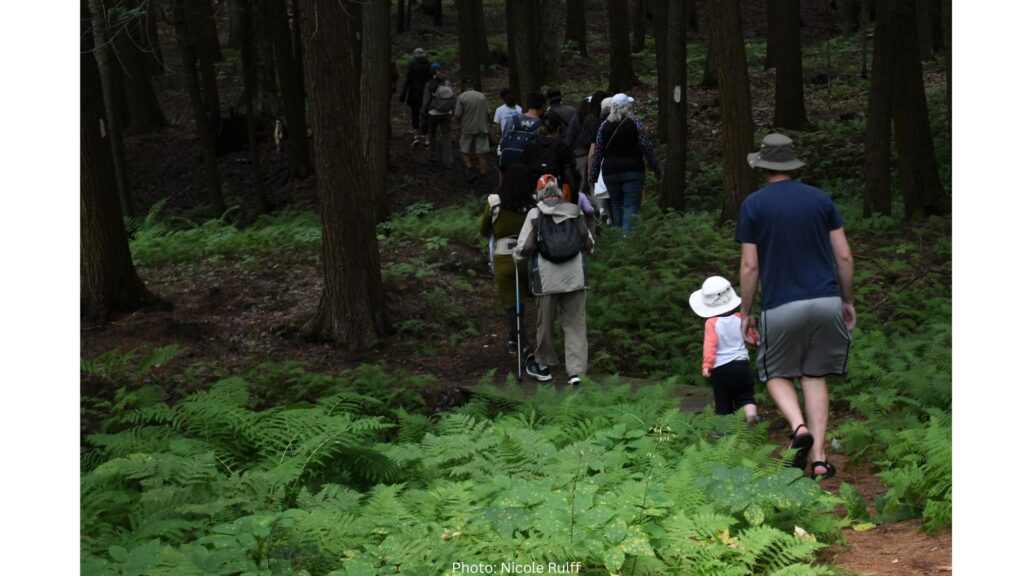
Check out upcoming Passport to Nature events and RSVP to join us: https://couchichingconserv.ca/passport-to-nature/
September 1, 2023- Exploring Benthic Biology
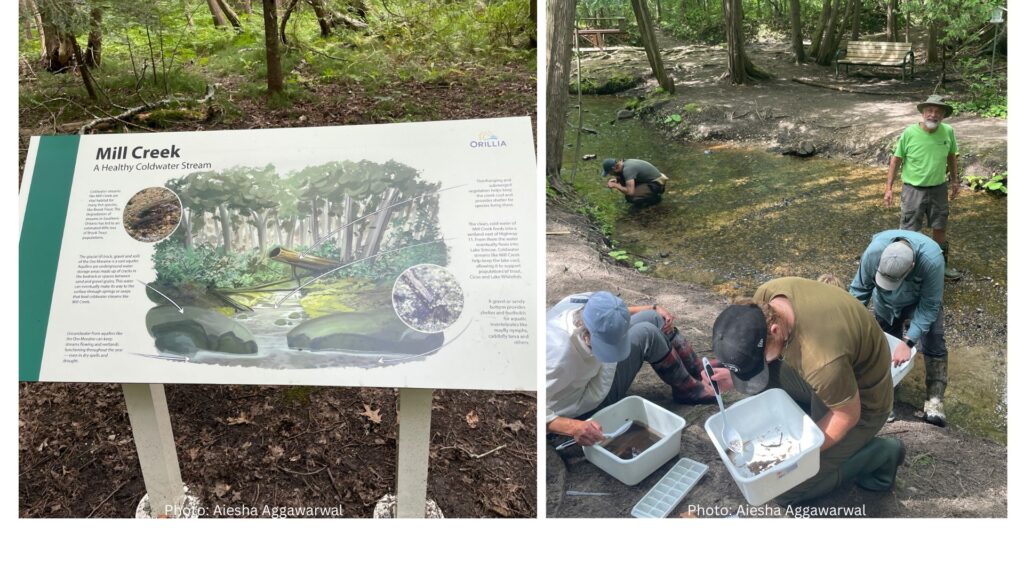
On August 21, Quinlan, Carsten and Lucas led a workshop at Scout Valley where water monitors had a chance to investigate the benthic macroinvertebrates living in Mill Creek. Benthic macroinvertebrates are small aquatic animals without backbones who live in the sediment, on plants, logs and other substrate in water. These include crustaceans like crayfish, as well as the larvae of caddisflies, dragonflies, mayflies, stoneflies, worms, water beetles, and even freshwater clams and snails.
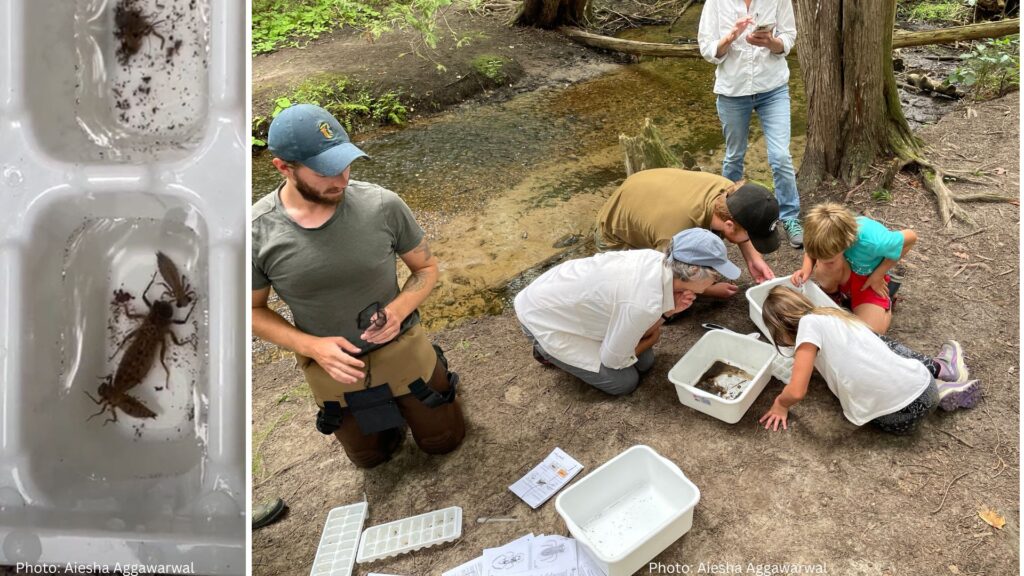
Certain species are tolerant of specific water conditions and are therefore valuable indicators of water quality. Usually, the presence of both an abundance and diversity of macroinvertebrates indicates good water quality. On this occasion, volunteers collected larvae of mayflies, damselflies, caddisflies, a blackfly, and a stonefly. They also found roundworms, threadworms, aquatic earthworms, and snails.

During the workshop, volunteers used kick nets and searched the stream bottom for the aquatic larval stages of various insects such as mayflies, caddisflies, stoneflies, dragonflies, dobsonflies, alderflies, and mayflies.
August 25, 2023- Releasing the Wild by Removing Fencing
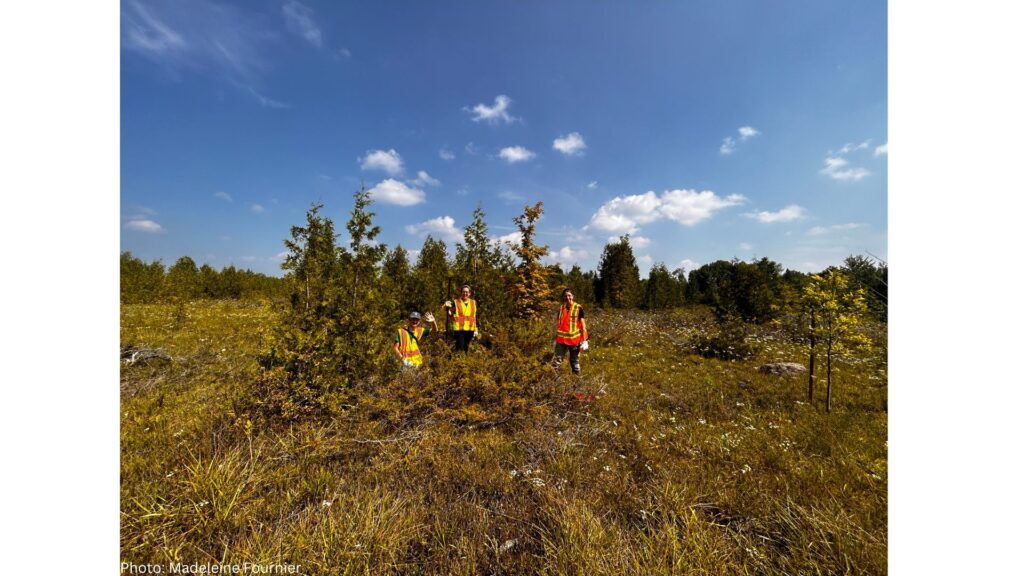
Alysha, Dorthea, Madeleine, and volunteers had a successful day on Wednesday August 16th at Sweetwater Nature Reserve for our ‘Release the Wild’ Youth Fence Removal event. Participants learned about the land, the species that live there, the ecological concept of habitat connectivity, and the impacts of unmaintained, remote fencing.

Alysha, Mariangela, Connor, Dorthea, and Madeleine went to areas where there is unwanted fencing that pose a risk to wildlife and got to work deconstructing the fence with bolt cutters and lots of untangling. Much of the wire was stuck in trees and shrubs that overgrew the fencing over time. They even enjoyed a nice lunch break by the stream. This project will ensure wildlife can move throughout the protected area unobstructed and safe.

The Releasing the Wild Program is supported by Transport Canada in Memory of Angela Rehhorn.
August 17, 2023 – Progress on the Grant’s Woods Accessible Trail

The time has finally come when Grant’s Woods is temporarily shutdown to the public for trail maintenance. Our closure started on Monday, August 14 and will end after Friday, August 25. We’re making the most of this time by upgrading the Periwinkle trail to make it truly handicap accessible. This involves reframing the trail, laying new stone, flattening it, removing hazards, and refinishing a bridge to be handicap friendly.

We’ve had a huge amount of interest and support for this project from Miller Aggregate, Washago TimberMart, Orillia Home Hardware, and Scott Design & Build, as well as donations from supporters to make the trail happen.
We hope that this accessible trail will be a great resource to everyone in the community who feels they need extra accessibility to enjoy nature. We also have an accessible parking lot and bathroom at Grant’s Woods, which is open during our business hours Monday- Friday 9am- 5pm.
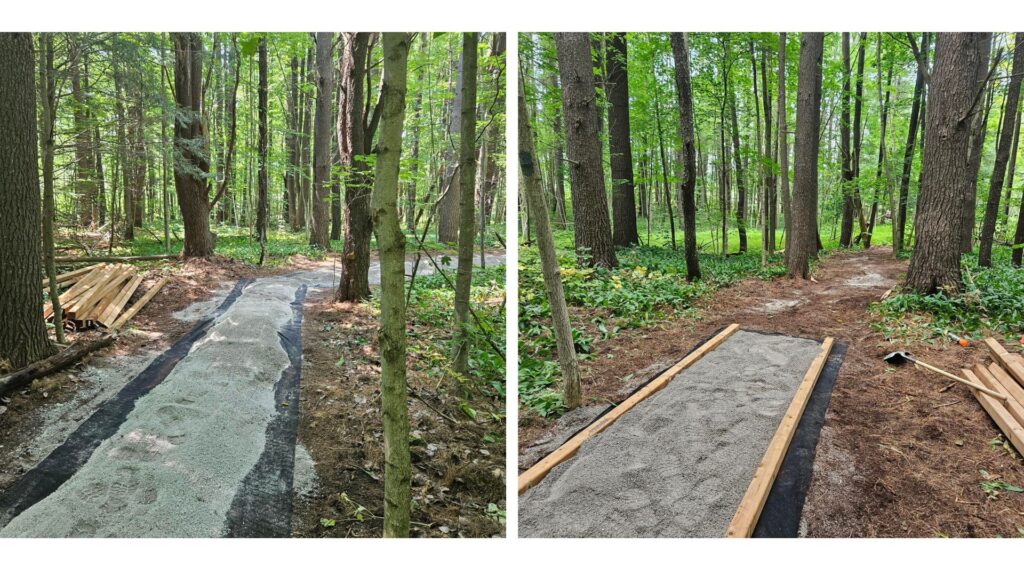
In the meantime, we hope everyone can enjoy exploring our other nature reserves and look forward to opening Grant’s Woods again when this project is complete!
August 5, 2023 – Black River Paddle Party

Thanks to our awesome leader Phil Careless, volunteers and everyone who attended the Passport to Nature Paddle Party on the Black River on Saturday! This event took place at the Ron Reid Nature Reserve – one of our wildest and largest properties, at 729-acres. Participants paddled from the Rosebush Landing to the foot of Ragged Rapids and back, while attempting to identify species from the level of the river. We had absolutely perfect weather, and even a breeze to keep the bugs away!

Missed out on this event? This very popular event was full with a waitlist – but don’t fret, you can download a map of Ron Reid Nature Reserve to do your own paddle of the historic Black River. Check out the newly upgraded canoe and kayak launch access at Rosebush Landing and set off to experience the beauty of this riparian landscape and local species.

July 24, 2023- Beavers Baffled
Beavers are a signature species in many local habitats. They help build and change wetlands as they dam up flowing water to create ponds. This ecosystem service ensures constant change that allows plant and animal life to flourish and remain diverse. Many sensitive species depend beaver activity for keeping up the habitat quality they need to survive.
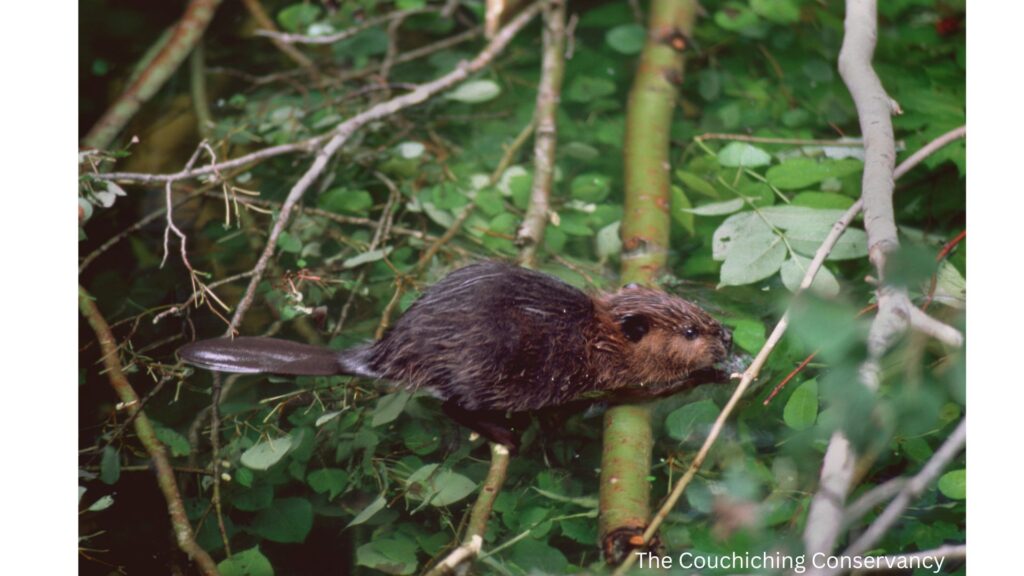
Sometimes, when beavers interact with humans that cycle goes awry. Beaver dams can cause flooding and property damage and, sometimes, we need to prevent that. The best solution is often installing beaver baffles. This allows the beavers to remain in the habitat assuming their important role and also prevents damaging flooding by ensuring that some water continues to flow. Try as they might, the beavers cannot figure out how to stop it and are baffled.

This is the case at Grant Wetland where Orillia residents live in close proximity to the Nature Reserve and a group of beavers is very active.

The summer staff were tasked with updating the beaver dam mitigation measures at Grant Wetland. They installed a simple “Beaver Baffle” to allow for proper drainage of the area. The baffle they installed is a metal cage-like structure that surrounds the inlet of a drainage pipe to reduce the chance of beavers clogging the pipe. While Grant Wetland’s new baffle is a simple one, there are a variety of sizes and types that can be used, depending on the population size of the beavers, risk of flooding, and potential for damage if flooding occurs.
July 20, 2023- Controlling the Spread of Invasive Species
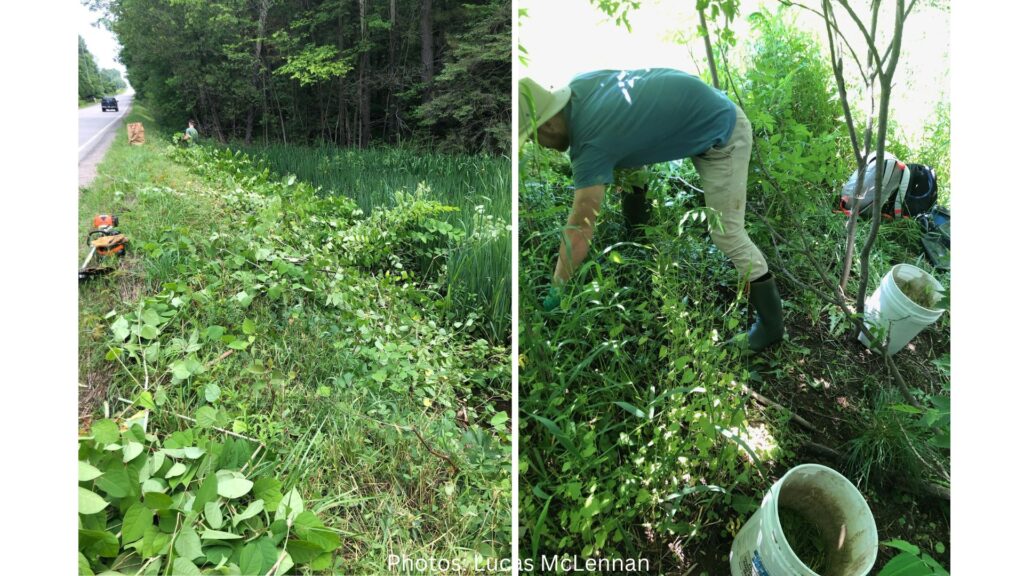
Over the past few weeks, our summer staff Carsten and Quinlan have been assisting Lucas in removing invasive plant species from Couchiching Conservancy properties. By doing so we’re maintaining the diversity of our native plant species and ensuring good habitat remains for our native animals. In our largest year yet for invasive plant control, we have been hard at work pulling Garlic mustard, digging out Dog-strangling vine, and cutting down Japanese knotweed. Over the next few weeks and months, we will also remove giant hogweed, invasive Phragmites, and buckthorn.
We’re also carefully mapping patches of invasive plants so we can easily revisit them to check progress and evaluate spread in the future. For our larger projects, we’ve relied on dedicated volunteers to work alongside us to help restore these protected lands to their natural state.
If you’re interested in learning more about invasive species in our region or want guidance to control them on your property, please visit the Invasive Species Centre‘s website.
July 12, 2023- Upgrades at Rosebush Landing
Lucas, our acting Reserve Steward, went out to Ron Reid Nature Reserve with Carsten and Quin, our summer technicians, and volunteers Alan and John to improve trails and access to the boat launch.

They installed a new ladder and winch at Rosebush Landing and it is ready for use! We hope everyone safely enjoys canoeing and kayaking the Black River by accessing this landing. It’s a great starting point for accessing Ragged Rapids to the East and Chisholm Trail and Washago to the West.
Click here for more information on Ron Reid Nature Reserve and here for more about Rosebush Landing.
July 2023- Snakes Galore while Reptile Monitoring
As part of our Community Science monitoring, we lay down these snake boards at some of our nature reserves. A snake board is an artificial cover object (in this case, a piece of plywood) that creates a safe space for snakes to rest and bask. Checking under cover boards makes it easier to detect snakes in an area because they are attracted to it, and it also allows us to check on them without disturbing any natural cover they might use. These monitoring visits only occur once a month by a trained team of staff and volunteers – we aren’t going out daily or weekly disturbing the snakes, nor are the locations of these boards disclosed to the public.
The Conservancy also has a strict no touch policy for all of our volunteers. The only exception is permits granted to staff for specific conservation projects, or moving wildlife off roads when necessary. Taking video footage such as this one allows us to identify snakes without handling them.
Reptiles are particularly vulnerable to decline in Canada and the world, and are considered indicator species for climate change, pollution, and habitat loss. By monitoring Reptiles, our volunteers contribute to our understanding of: changes to the Reptile abundance and species composition in our region; the quality and condition of our ecosystems; and the presence or absence of listed Species at Risk. Consistent observation helps us understand which areas are valuable high quality reptile habitat, and which areas could benefit from habitat improvements. The information volunteers collect also contributes to the Reptile and Amphibian Atlas of Ontario.
May 2023- In Search of Salamanders
Salamander Monitors Jane Bonsteel and Chris Stewart went out to place salamander boards at a new location in preparation for fall salamander monitoring.
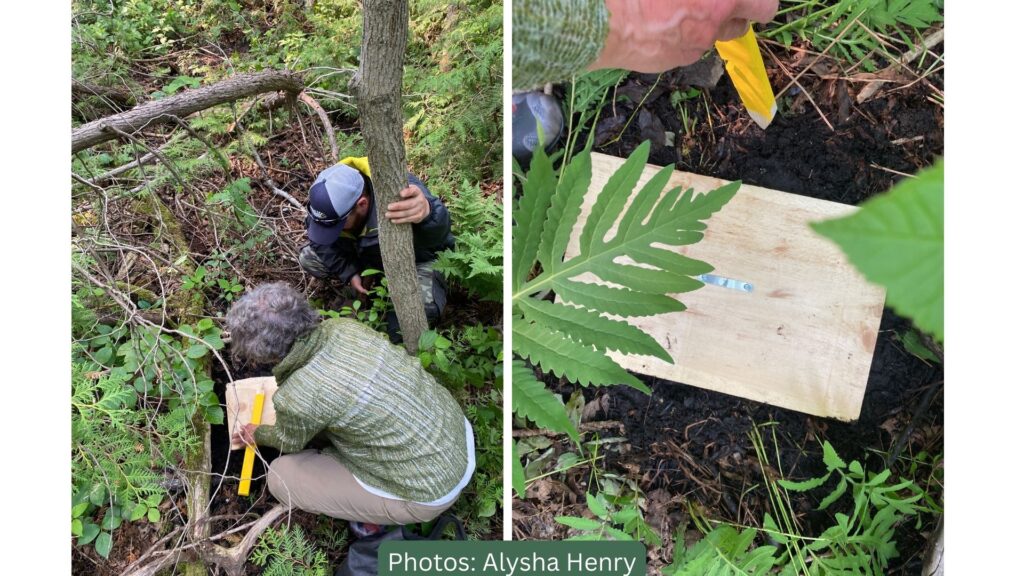
This nature reserve has no recorded observations of salamanders inside the property, but there have been plenty of sightings just outside of it. These species include blue-spotted salamanders and spotted salamanders. This nature reserve is absent of trails, and is swampy (and buggy) for the majority of the year. Therefore, our species list is small compared to some of our other more popular nature reserves, like Grant’s Woods. However, thanks to our dedicated community science teams, our less-explored nature reserves are still getting the attention they deserve and we’re learning about the wildlife they host.
Ever wonder why we sometime leave locations out of our posts and images? We do this to protect Species at risk from disturbance. Seeing them in the wild is a treat, but we can harm their ability to survive and thrive in their habitat when too many people actively seek them out.
June 10, 2023- Passport to Nature’s Grassland Bird Walk

Our first in-person Passport to Nature event of the year was a success! Participants embarked on a Grassland Bird Walk at Turnbull Ranch, led by expert naturalist Ginny Moore, to learn about the Carden Alvar and some of the species who call it home.

Right: Observing distant birds through binoculars.
Participants hiked and observed birds with binoculars and sound. Some species they saw included bobolinks, meadowlarks, blue heron, starlings, a variety of sparrows, and even a black bear! They heard catbirds, vireos, sand hill cranes, and others.
Our next Passport to Nature events are the Paddle Party on the Black River (August 5) and Fascinating Forests (August 20). Sign up for these free events here.
June 23, 2023- Fire on Couchiching Conservancy Nature Reserves?
The recent and ongoing wildfires of Northern Ontario and Quebec have made a major impact on natural areas over the past few weeks. As fire season continues to heat up, we want to make our volunteers and visitors at Nature Reserves aware of the impacts fires have on The Couchiching Conservancy Nature Reserves.

Costs and Benefits of Wildfire: Historically, small understory fires have been a normal and necessary part of forest health. Small fires allow plant succession and the sprouting of fire-activated seeds. They can cause more variation in habitat structure and therefore, more biodiversity, when they occur infrequently on small scales.
The current uptick in frequency and severity of wildfires is a hallmark of climate change. Many areas have become dryer with less snowfall in the winter and less frequent soaking rain events in the summer. Additionally, many areas are not managed with fire prevention in mind and have huge buildups of fuel available. When a fire ignites in these places, it can result in massive crown fires (fires that burn entire trees rather than just the underbrush) that raze the entire forest over many kilometers of land. These crown fires can influence the local weather, making more intense fires more difficult to control. This type of fire can lead to issues like erosion, loss of species at risk, habitat loss, decreased biodiversity, decreased air quality, and water quality issues. It can take decades for a forest to grow back, and often, invasive species have an edge in these disturbed areas when compared to native early successional plants.
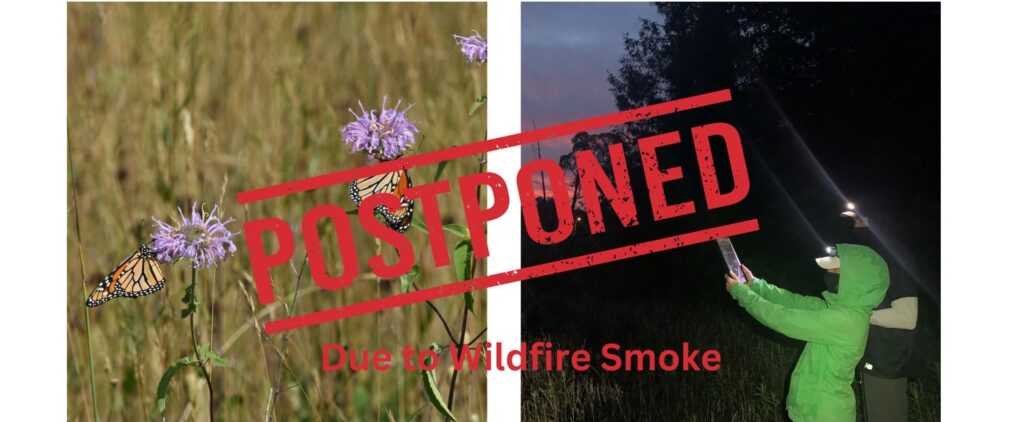
Recent impacts: While some fires are still burning and more will ignite over the next several months, it’s still too early to calculate the full impact of fires on natural areas in Ontario. We are fortunate that no Couchiching properties have ever burned. However, that possibility exists. The recent degradation of air quality has made us acutely aware that, even if our properties don’t burn, we are still affected by fires. The air quality caused limited visibility and unhealthy conditions for volunteers, staff, and wildlife. We were forced to reschedule outdoor events including Monarch Monitoring training, Bat Monitoring visits, and land stewardship activities like invasive species management.
What to do if a fire occurs or affects air quality: We don’t want anyone in unhealthy situations and encourage anyone involved in volunteering or other outdoor activities to cancel their plans if fire weather arises. This includes strong dry winds, low air quality due to smoke, and close proximity of any wildfires. If you’re out on a Couchiching Nature Reserve and notice any of these occurrences, please leave the property and report it to us. If you’re not sure if the conditions warrant cancellation, please call us and we’ll help you make a decision about your monitoring or recreational visit. To check air quality, visit Air Quality Ontario or your preferred weather forecasting service.
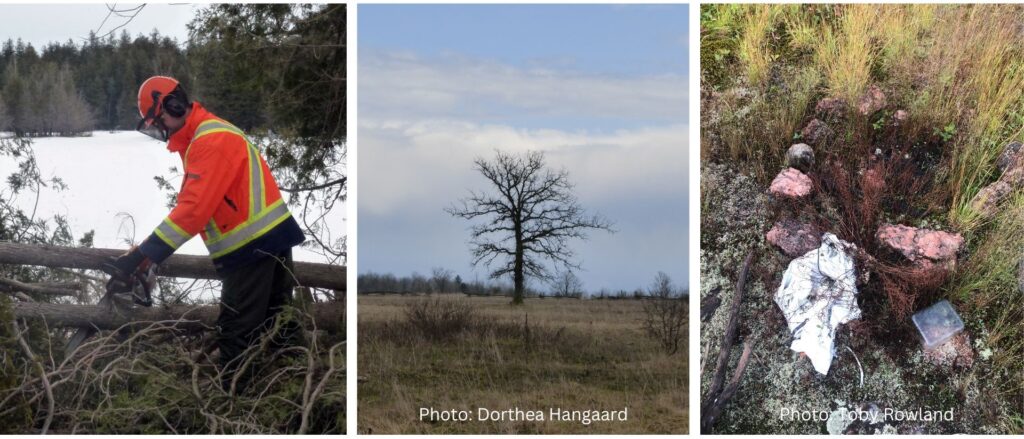
Fire hazards on Nature Reserves: Our staff and volunteers do our best to manage Nature Reserves in ways that discourage the accumulation of fire fuel and other hazards. If you’re out on a Nature Reserve, there are a few things to look for that might make it easier for fire to burn through an area including:
-
- Lots of brush, branches, and leaves. This is excellent wildfire fuel. Every natural area accumulates some debris, but an excess can leave areas vulnerable to hotter, larger fires.
-
- Grassy areas. Dry grass is also great fire fuel. Fire can move quickly through these spaces so visitors should be alert if electrical storms are in the area.
-
- Lack of rainfall over the past few days to weeks. An area might have lots of fuel, but if it’s wet, it may not be as vulnerable to fire. Check your local fire risk map to see if your area is fire prone when you plan to visit.

If you see fire hazards on a Couchiching Conservancy property, please report the details and location to us so our Land Stewardship team can assess the risks.
Fire safety: There are a number of safety measures that should always be observed in outdoor recreational areas. Never light fires in times and places where it is not allowed. Campfire sparks, fires that haven’t been properly smothered, and unintentional fires from recreational fires like sparklers and fireworks are a major cause of unintentional human-caused wildfires. Fires of any kind are never allowed on Couchiching Conservancy properties. If you see a fire, report it right away to local emergency and fire services and the property owners, if possible. Prompt reporting saves human lives, wildlife, and property. If you see the remains of a campfire on a Couchiching property, please report it to us. Finally, it is never safe to stick around during a wildfire. The safest option is to leave the area.
What can you do about wildfires?
The risk of fires can be scary and discouraging when you want to be outdoors, especially in remote areas. The first thing you should do is get educated about fire risks, ongoing fires, emergency measures, and fire prevention. Use advice from trusted sources to increase your safety and lessen the risks of causing or fueling a wildlife. Perhaps, the best thing you can do is get involved. Contact your local, provincial, and federal representatives to tell them that fire safety and fire prevention should be a top priority in natural areas. Volunteer for a land trust or nature conservancy. Your time will be well-spent helping organizations like ours to manage land, and you’ll likely have a good time while learning more about nature. Finally, if you are able, donate to organizations that manage land, prevent fires, and restore natural areas after fires have occurred. We all have a part to play to protect natural areas from fire disasters.

